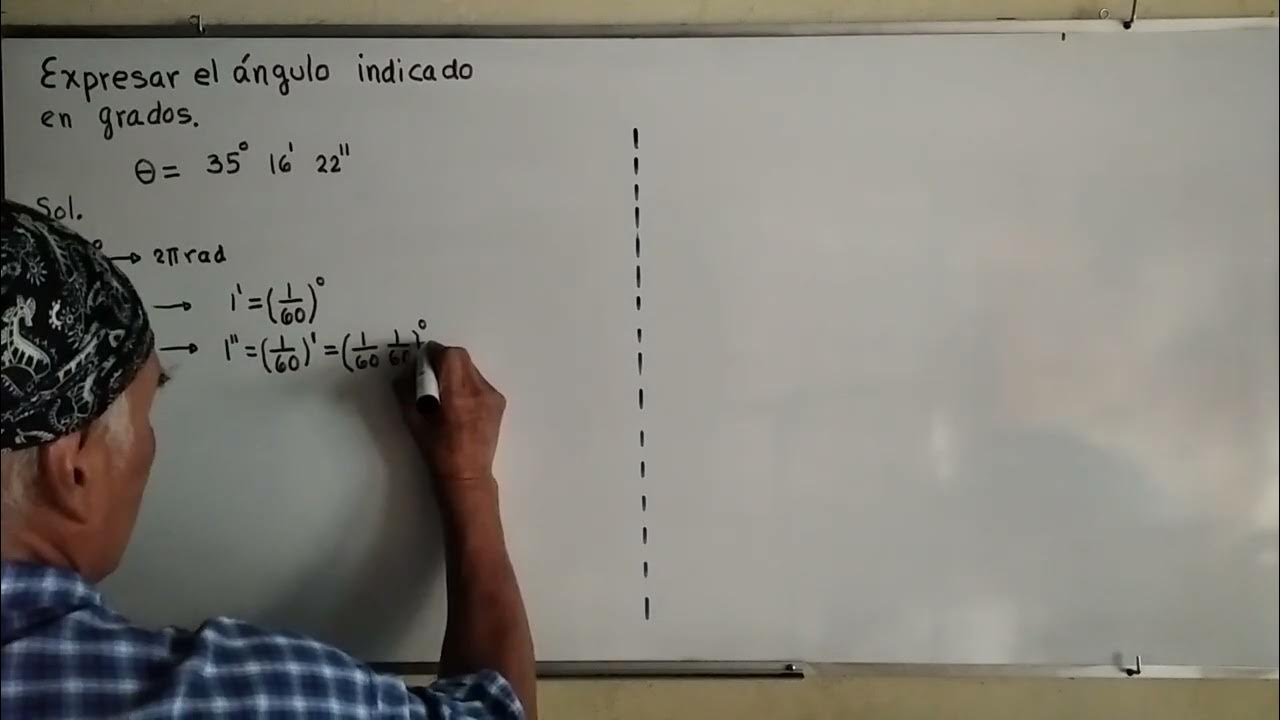Writing a fraction as a repeating decimal
Summary
TLDRThe video script demonstrates the process of converting the fraction 29/37 into a decimal. The presenter explains that since 29 is less than 37, the result will be less than 1. They proceed with a step-by-step long division, illustrating how to place the decimal and handle the zeros. The division shows a repeating pattern of '783', leading to the conclusion that 29/37 is approximately 0.783 repeating.
Takeaways
- 🔢 The process involves converting the fraction 29/37 into a decimal.
- 📉 The presenter acknowledges that the decimal will be less than 1 since 29 is less than 37.
- 📝 The division starts with placing the decimal point and adding zeros to the dividend as needed.
- 🔄 A trial-and-error method is used to determine how many times 37 goes into the dividend.
- 🧮 The presenter demonstrates the division step by step, starting with 37 going into 290 seven times.
- 💡 The division reveals a pattern where the digits 783 repeat indefinitely.
- 🔁 The repeating pattern is indicated by placing a bar over the digits 783.
- 📖 The final result of the division is expressed as a repeating decimal: 0.783783783…
- 🕒 The presenter notes that the problem is tedious due to the repetitive nature of the division.
- 📋 The process is shown to be methodical and systematic, emphasizing the importance of patience in long division.
Q & A
What is the process described in the transcript?
-The process described in the transcript is the long division method to convert the fraction 29/37 into a decimal.
Why is it stated that the result will be less than 1?
-The result will be less than 1 because the numerator (29) is less than the denominator (37), indicating that the fraction represents a value less than one whole.
What is the initial step taken in the long division process?
-The initial step is to place the decimal point and add zeros after the 29 to facilitate the division by 37.
How does the division process begin?
-The division begins by determining how many times 37 goes into 290, which is found to be 7 times.
What is the first non-zero digit in the decimal part of the result?
-The first non-zero digit in the decimal part of the result is 7, as 37 goes into 290 seven times.
What is the remainder after the first subtraction in the division?
-The remainder after the first subtraction is 31, which is obtained after subtracting 259 (7 times 37) from 290.
How does the division process continue after the first subtraction?
-The process continues by bringing down another zero to make 310 and then determining how many times 37 goes into 310, which is found to be 8 times.
What pattern is observed in the division process?
-A repeating pattern of the digits 783 is observed in the division process, indicating that the decimal will be a repeating decimal.
How is the repeating decimal represented in the transcript?
-The repeating decimal is represented by placing a line over the digits 783 to indicate that they repeat indefinitely.
What is the final decimal representation of 29/37 mentioned in the transcript?
-The final decimal representation of 29/37 mentioned in the transcript is 0.783 repeating.
Why is the process described as tedious?
-The process is described as tedious because it involves multiple steps of division, subtraction, and bringing down zeros, which is repetitive and can be time-consuming.
Outlines

Esta sección está disponible solo para usuarios con suscripción. Por favor, mejora tu plan para acceder a esta parte.
Mejorar ahoraMindmap

Esta sección está disponible solo para usuarios con suscripción. Por favor, mejora tu plan para acceder a esta parte.
Mejorar ahoraKeywords

Esta sección está disponible solo para usuarios con suscripción. Por favor, mejora tu plan para acceder a esta parte.
Mejorar ahoraHighlights

Esta sección está disponible solo para usuarios con suscripción. Por favor, mejora tu plan para acceder a esta parte.
Mejorar ahoraTranscripts

Esta sección está disponible solo para usuarios con suscripción. Por favor, mejora tu plan para acceder a esta parte.
Mejorar ahoraVer Más Videos Relacionados
5.0 / 5 (0 votes)






